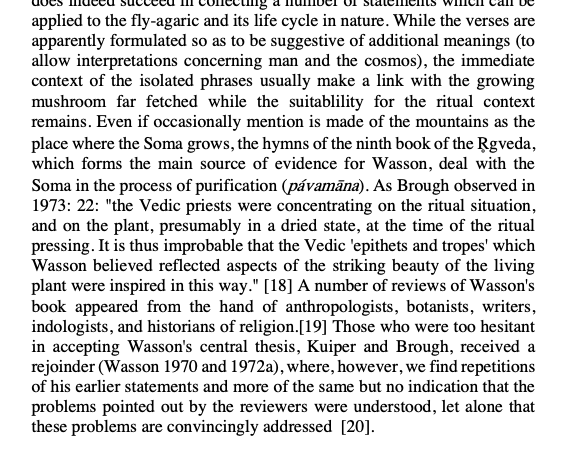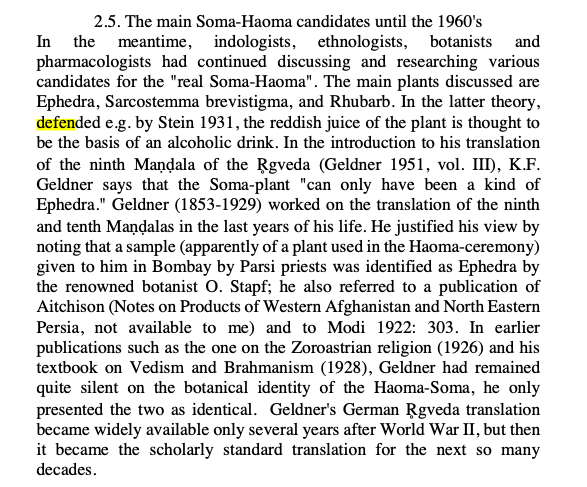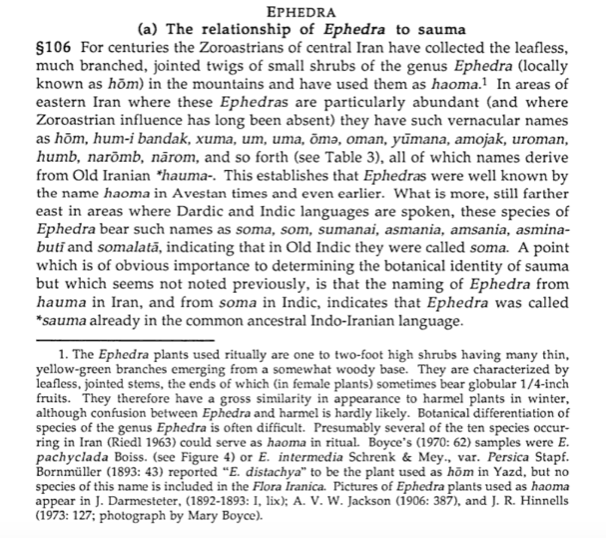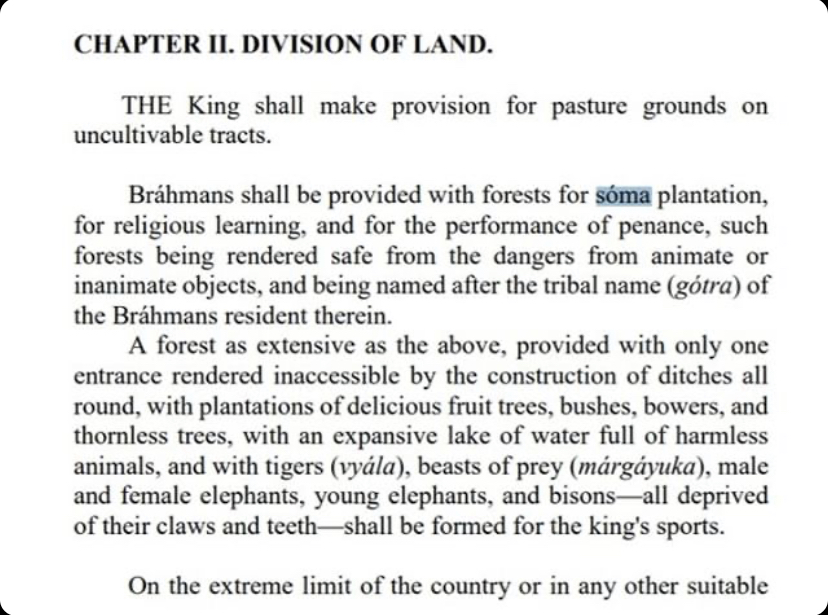THREAD: Soma, its significance and possible identity
(put together with the kind help of our guru @TIinExile)
अपाम सोममम्र्ता अभूमागन्म जयोतिरविदाम देवान |
किं नूनमस्मान कर्णवदरातिः किमु धूर्तिरम्र्त मर्त्यस्य ||
Rigveda (8.48.3)
“We have drunk Soma and become immortal”
(put together with the kind help of our guru @TIinExile)
अपाम सोममम्र्ता अभूमागन्म जयोतिरविदाम देवान |
किं नूनमस्मान कर्णवदरातिः किमु धूर्तिरम्र्त मर्त्यस्य ||
Rigveda (8.48.3)
“We have drunk Soma and become immortal”
The importance of Soma is sufficiently shown by the fact that the whole of the ninth Maṇdala of the Rigveda, and six hymns in other Maṇdalas, are devoted to its praise.
( https://www.sacred-texts.com/hin/rigveda/rv09096.htm)">https://www.sacred-texts.com/hin/rigve...
( https://www.sacred-texts.com/hin/rigveda/rv09096.htm)">https://www.sacred-texts.com/hin/rigve...
At the conclusion of Somayāyas such as the Agnicayana/Athiratra, the Śatarudriya (from the Krishna Yajurveda Samhita (4.5) of Taittiriya Shakha) is chanted, closing with an offering of soma, considered the only prasāda that is eligible to be offered to the Gods, to Rudra.
[the Śatapatha Brahmana (9.1.1.1) says, “He then performs the Śatarudriya sacrifice. This whole Agni has here been completed; Agni now assumes the wrathful form of the deity Rudra”, who would then be appeased by Śatarudriya] https://link.springer.com/chapter/10.1007/978-94-009-8941-2_5">https://link.springer.com/chapter/1...
Śiva is to referred to in the Śatarudriya as "andhasas pate" - "O Lord of the soma plant".
The shoot is called amśu, while the plant as a whole is called andhas, which also denotes its juice.
Andhas अन्धस् n. (Gk. ἄνθος), a herb -
the Soma plant/Soma juice; or sacrificial food
The shoot is called amśu, while the plant as a whole is called andhas, which also denotes its juice.
Andhas अन्धस् n. (Gk. ἄνθος), a herb -
the Soma plant/Soma juice; or sacrificial food
From the time of the Brahmanas (ŚB X 4.1.22) the juice of the Soma plant is identified with the moon, which itself is conceived as the cup containing the beverage of immortality.
( https://www.sacred-texts.com/hin/sbr/sbe43/sbe4361.htm)
also">https://www.sacred-texts.com/hin/sbr/s... see Preparation for the Somayāga, from ŚB: https://www.sacred-texts.com/hin/sbr/sbe43/sbe4332.htm">https://www.sacred-texts.com/hin/sbr/s...
( https://www.sacred-texts.com/hin/sbr/sbe43/sbe4361.htm)
also">https://www.sacred-texts.com/hin/sbr/s... see Preparation for the Somayāga, from ŚB: https://www.sacred-texts.com/hin/sbr/sbe43/sbe4332.htm">https://www.sacred-texts.com/hin/sbr/s...
In case of unavailability of the original, the replacement used is Pūtikā (पूतिका), which can be used in Yāgas as a substitute for Somalatā as described in the MB.
pUtikAniva somasya tathedaM kriyatAmiti
athavA.anaDuhe rAjansAdhane sAdhuvAhine
Mahabharatha Vana Parva 3.35.33
pUtikAniva somasya tathedaM kriyatAmiti
athavA.anaDuhe rAjansAdhane sAdhuvAhine
Mahabharatha Vana Parva 3.35.33
The Pūtīka is postulated to be Sarcostemma acidum/brevistagma, which is an endangered species and not characterized as a hallucinogenic. It is a medicinal plant described in great detail in Ayurveda.
http://impactfactor.org/PDF/IJPPR/6/IJPPR,Vol6,Issue4,Article4.pdf">https://impactfactor.org/PDF/IJPPR...
http://impactfactor.org/PDF/IJPPR/6/IJPPR,Vol6,Issue4,Article4.pdf">https://impactfactor.org/PDF/IJPPR...
“If they cannot get the Syenahrita, he may press Âdâra plants. If they cannot get Âdâras, he may press brown Dûb (dûrvâ) plants, for they are akin to Soma; If they cannot get brown Dûb plants, he may also press any kind of yellow Kusa plants.” ŚB 4.5.10
( https://www.sacred-texts.com/hin/sbr/sbe26/sbe2669.htm)">https://www.sacred-texts.com/hin/sbr/s...
( https://www.sacred-texts.com/hin/sbr/sbe26/sbe2669.htm)">https://www.sacred-texts.com/hin/sbr/s...
Soma, or "Syenahrita", is that which is taken by Syena (an eagle, Garuda) - referring to the story in the Adi parva of the Mahabharatha, in which Garuda defeats the Devas and brings the Somamrtha from swarga to free his mother and himself from bondage.
( https://www.sacred-texts.com/hin/m01/m01021.htm)">https://www.sacred-texts.com/hin/m01/m...
( https://www.sacred-texts.com/hin/m01/m01021.htm)">https://www.sacred-texts.com/hin/m01/m...
The old Vedic and Avestan name of the Hindu Kush mountains is & #39;Uparisyena& #39; in Sanskrit and & #39;Upairisaena& #39; in Avestan (or, the mountains crossed by the syena, an eagle), referring to Garuda bringing Soma from across mountain range.
(The divine Hōm is said in Yasna 10.11 (primary liturgical collection of Avesta texts, recited during the yasna ceremony) to have been carried to the Upāirisaēna range by birds).
In Persian, the same word was & #39;abersen& #39; before the term The Hindu Kush, meaning “killer of Hindus”,
In Persian, the same word was & #39;abersen& #39; before the term The Hindu Kush, meaning “killer of Hindus”,
was introduced by the Arabs (so named since slaves from the Indian subcontinent died because of the harsh weather conditions of the Afghan mountains while being taken to Central Asia)
Ibn Batutta, in Chapter XIII of Rihla – Khorasan says:
Ibn Batutta, in Chapter XIII of Rihla – Khorasan says:
“After this I proceeded to the city of Barwan, in the road to which is a high mountain, covered in snow and exceedingly cold; they call it the Hindu Kush, that is Hindu-slayer, because most of the slaves brought thither from India die on account of the intenseness of the cold.”
The Mahabharata and Rg Veda describe the highest quality soma as found on the Mujavant mountain, on the northern edge of the Tibetan plateau. (Soma is therefore also called mujavata = of the mujavan mountain)
From the Mahabharata 14. 8 ( https://www.sacred-texts.com/hin/m14/m14008.htm)">https://www.sacred-texts.com/hin/m14/m...
From the Mahabharata 14. 8 ( https://www.sacred-texts.com/hin/m14/m14008.htm)">https://www.sacred-texts.com/hin/m14/m...
Śayanacharya, a 15th century Sanskrit Mimamsa scholar from the Vijayanagara era wrote a bhashya of Rg Veda in which he mentions that Soma is procured from the Mujavant mountain where it grows, and the best soma is obtained from there.
Brahmins would procure soma for Vedic rituals from the vedic people that resided in Northwestern India, who plucked soma from Mujavant mountain, throughout the Vedic age.
With time, scarcity of the plant, and the influence of muslim invasions, it became harder and harder to procure soma and eventually its replacements began to be used in its stead.
Somayagis from Andhra procured Soma from the Himalayas until the Sultan of Golcondra prohibited it.
Somayagis from Andhra procured Soma from the Himalayas until the Sultan of Golcondra prohibited it.
The first replacement was Adara, used by Nepali samavedis.
In 1842, John Stevenson identified the "moon-plant" collected for the preparation of a Soma ritual (somayâga) as Sarcostemma viminalis (a leafless succulent plant, replacement for soma)
In 1842, John Stevenson identified the "moon-plant" collected for the preparation of a Soma ritual (somayâga) as Sarcostemma viminalis (a leafless succulent plant, replacement for soma)
He also noted that since the English occupation of the Marátha country the Somayâga was performed only a total of three times ( once each in Nasik, Pune and Sattara).
(from https://halshs.archives-ouvertes.fr/halshs-02173553/document)">https://halshs.archives-ouvertes.fr/halshs-02...
(from https://halshs.archives-ouvertes.fr/halshs-02173553/document)">https://halshs.archives-ouvertes.fr/halshs-02...
The botanical name and nature of the Soma plant is widely speculated. Roth held that it was Sarcostemma acidiim, while Watt suggested the Afghan grape. Rice thought it to be sugar-cane, while Max Mūller and Rājendralāla Mitra suggested it was a species of hop.
Hillebrandt considered that neither hops nor the grape could explain the references to Soma.
There were multiple attempts to characterize it as a hallucinogen, ignoring the ritual setting and the months of preparation undertaken by the Somayagins.
There were multiple attempts to characterize it as a hallucinogen, ignoring the ritual setting and the months of preparation undertaken by the Somayagins.
In 1968, Robert Gordon Wasson, a banker with JPMorgan with an interest in ethnomycology, was the first to propose that soma was an entheogen in his book, Soma Divine Mushroom Of Immortality ( https://archive.org/details/in.ernet.dli.2015.449342),">https://archive.org/details/i... with Amanita muscaria, or the fly agaric as the main component
He based his interpretation on his observation that descriptions of Soma omitted any description of its roots, stems or seeds, thereby suggesting it must have been a mushroom, and interpreted the adjective hári as meaning red.
He also suggests that the since Amanita has a urinary metabolite, the priests that drank soma urinated soma could only point to the mushroom, ignoring the fact that the consumption of mushrooms was prohibited for Vedic Brahmins.
In 1978, he claimed that in special potion “kykeon”, a pivotal component of the Eleusinian Mysteries, initiation ceremony of the Greek cult of Demeterand Persephone, contained psychoactive ergotine from the fungus Ergot (The Road to Eleusis: Unveiling the Secret of the Mysteries)
Wasson’s work was heavily critiqued for its fallacies.
“The trap however in which Wasson and most scholars [..] have fallen is to assume that the psychophysiological state must be attributed directly to a psychoactive substance which brings about a similar state in modern,
“The trap however in which Wasson and most scholars [..] have fallen is to assume that the psychophysiological state must be attributed directly to a psychoactive substance which brings about a similar state in modern,
Western, well-fed, and possibly smoking and drinking subjects. It must be clear that this is a shortsighted and anachronistic presupposition. it is generally forgotten that participants in the vedic ritual have undergone (rigorous) preparations...
It would be far-reaching to state that Vedic ritualists went through months of rigorous preparation for Soma Yaga (“fasting (for 13 days leading up to the Soma yaga), restraining speech, sleep deprivation, sensory deprivation by spending a day in a dark hut, et cetera.”);
just to consume a hallucinogen at the end of it, all the while reciting Vedic verses in Sanskrit from memory alone (vedas were never written down until the modern era for fear of distortions).
From from The Soma-Haoma problem by Prof. Jan E.M. Houben( https://halshs.archives-ouvertes.fr/halshs-02173553/document…)">https://halshs.archives-ouvertes.fr/halshs-02...
From from The Soma-Haoma problem by Prof. Jan E.M. Houben( https://halshs.archives-ouvertes.fr/halshs-02173553/document…)">https://halshs.archives-ouvertes.fr/halshs-02...
In an article published in 1975, Stella Kramrisch sought to prove that the replacement, Pûtˆka was also a mushroom with psychotropic effects. According to her, "Pûtika [sic], the foremost, and possibly the only direct surrogate for Soma, is a mushroom."
"When the fly-agaric no longer was available, another mushroom became its substitute. ... The identification of Pûtika [sic], the Soma surrogate, supplies strong evidence that Soma indeed was a mushroom."
Kramrisch& #39; identification was based on the name of a mushroom called & #39;Putka& #39; by the Santals in Eastern India. As Kuiper (1984) pointed out, the linguistic connection suggested by Kramrisch does not hold.
In Iranian, soma was called “homa”, and the hom used by zoroastrians was identified as Ephedra (one of whose side effects can be hallucinations) but whether Soma and Homa were identical has not been asserted.
(From Haoma and Harmaline: The Botanical Identity of the Indo-Iranian Sacred Hallucinogen "soma" and Its Legacy in Religion, Language, and Middle-Eastern Folklore
By David Stophlet Flattery, Martin Schwartz)
By David Stophlet Flattery, Martin Schwartz)
Dr. Frawley ( @davidfrawleyved) is of the belief that that the Soma in India were special powerful plants growing in mountain lakes and riverine regions of Himalayas. He rejects Ephedra of Afghanistan and Iran being Soma; because Ephedra is a dry plant with very little juice.
In the Arthasastra, it was seen as the duty of Brahmins to grow Soma and the king to provide land for the Brahmins to grow Soma in order to perform soma yoga.
The effort of western Indologists, in the absence of any credible evidence, to apply a reductionist approach to vedic rituals by relentlessly pushing forward the claim that soma is hallucinogenic is not accidental.
It is an attempt to debase vedic tradition, by equating it with the other less advanced ancient civilisations of the world, that, in their eyes, being pagan, and therefore “backward”, must have all employed the entheogens to induce altered states of consciousness -
for instance, the Mazatec custom of consuming mushrooms containing psilocybin in ritual practice, the consumption of psychoactives by native american peyote cults to facilitate their religious/spiritual experiences, or the use of Ayahuasca (“the vine of the spirits in Quechua),
a psychedelic brew consumed by Amerindians in South America. It is unfathomable to them to believe that vedic rituals in ancient india could produce an apotheosis or a culmination of theophanic experience through rigorous ritual and spiritual practice alone.

 Read on Twitter
Read on Twitter

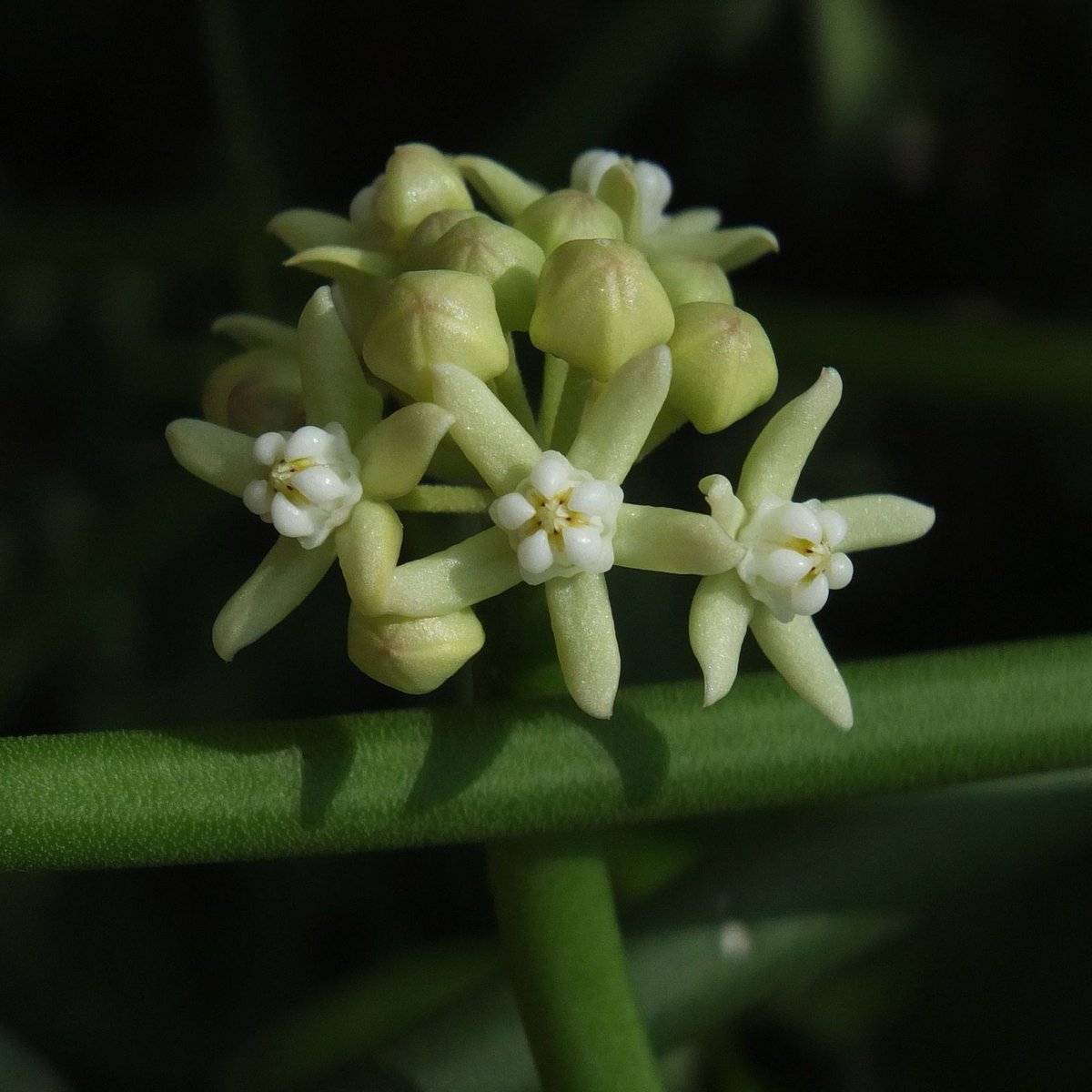
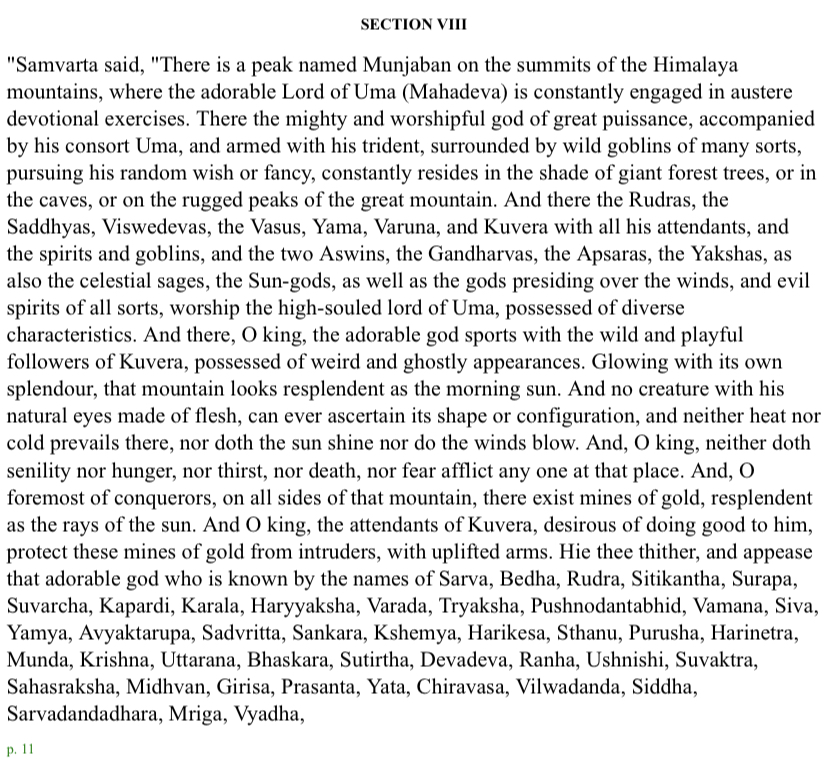
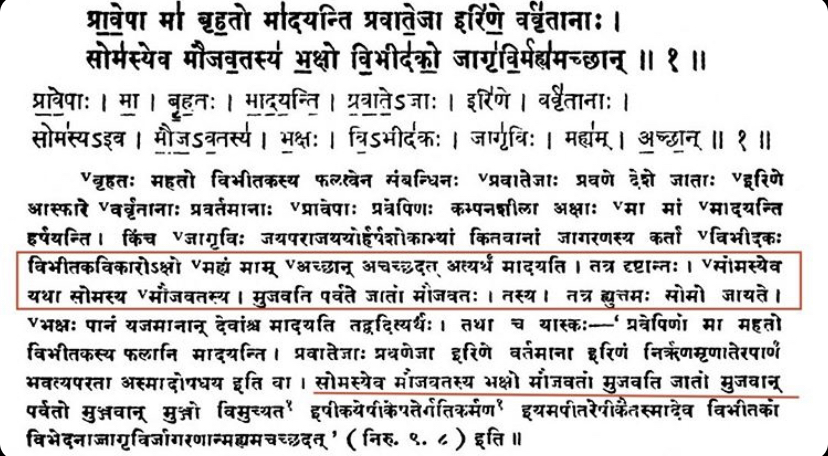
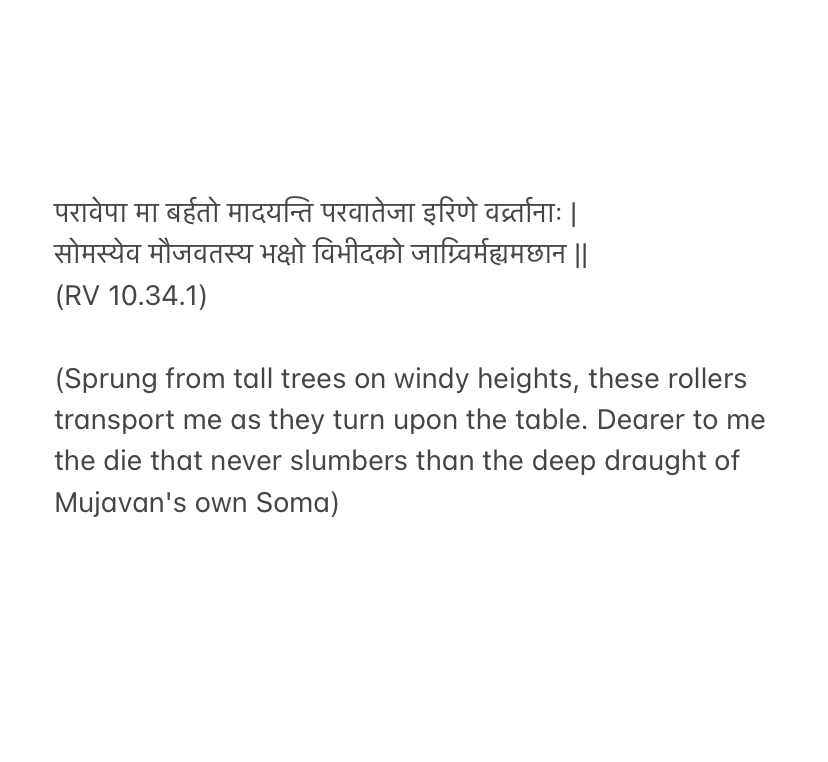

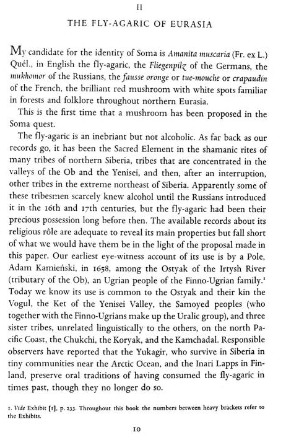
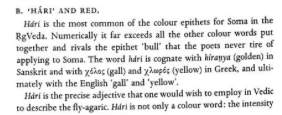
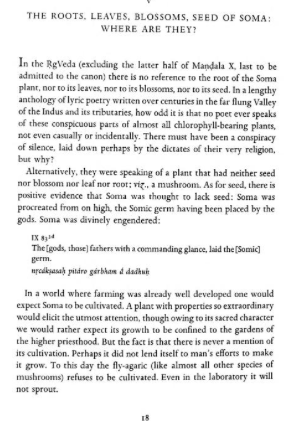

![Wasson’s work was heavily critiqued for its fallacies. “The trap however in which Wasson and most scholars [..] have fallen is to assume that the psychophysiological state must be attributed directly to a psychoactive substance which brings about a similar state in modern, Wasson’s work was heavily critiqued for its fallacies. “The trap however in which Wasson and most scholars [..] have fallen is to assume that the psychophysiological state must be attributed directly to a psychoactive substance which brings about a similar state in modern,](https://pbs.twimg.com/media/ElkKo30UcAYlnPI.png)
